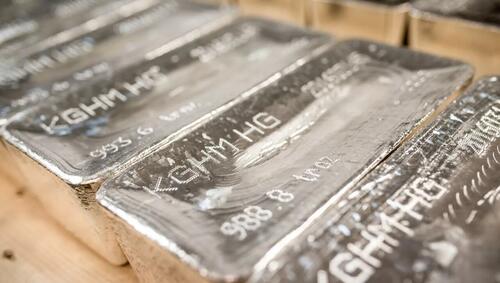The EU has a serious shortage of rare earths, which are vital for industrial and technological production on the continent. Poland may have at least a partial solution, and it has to do with Poland’s expertise in mining and extraction.
In a wide-ranging interview, Tomasz Zdzikot from the SET Foundation talks about how Europe has lagged behind in the mining of rare earth minerals for. years, with China clearly dominating the industry.
“Europe correctly diagnoses that raw materials are crucial, for example, in technological development and energy. (…) While the diagnostics have been good for over a decade, this has not translated into actions that could mitigate the identified risks,” the SET Foundation’s Tomasz Zdzikot told the DoRzeczy news portal.
A recent report from the SET Foundation addressed what the EU has identified as a key pillar of national security: the mining industry, and more broadly, the raw materials industry.
Highlighting that Europe must “join the ongoing raw materials race,” Zdzikot said, “For over a decade, Europe has been correctly recognizing that raw materials are crucial, for example, in technological development and energy.”
How can Poland help?
This is where Poland’s mining industry will play a key role, Zdzikot told DoRzeczy. The country is not just involved in coal mining but copper mining, lithium mining, and titanium mining.
Poland’s KGHM is one of the world’s largest silver producers, as well as a major copper producer. The company has mines and mining projects in Chile, the United States, and Canada, allowing it to play a significant role in ensuring Europe’s resource security.
He also emphasized that Europe must promote careers in mining.
“From 2000 to today, the number of mining graduates in Europe has fallen by 60 percent. The average age of a miner in Europe is now over 50. Fortunately, we in Poland still have miners, experts, and excellent universities that educate miners,” Zdzikot said.
“We also have excellent academic staff capable of leading complex projects,” he continued, adding that what Poland lacks “is a coherent resource policy.”
The EU as a whole must decide what raw materials to pursue to try to gain a competitive advantage. This can start in Poland, as the country can provide the continent with all the copper and coal it needs. However, Poland’s mining sector needs to be expanded to other resources as well.
The SET Foundation report also calls for a European Commodities Fund to support raw material investments worldwide, help identify deposits, and establish financial structures to acquire rights to raw materials.
The challenges are huge
Europe is, however, currently vulnerable to disruptions in the supply of almost all key raw materials.
There are plans, the expert noted, to increase extraction, simplify and shorten procedures, and diversify supply sources, but the EU — along with many other countries — remains highly dependent on outside sources, namely, China.
This is no accident. China, the report emphasizes, has been pursuing its rare earths policy since the 1980s. Today, it supplies 100 percent of global demand for 10 heavy rare earth elements.
Asked about China’s recent decision to limit exports of rare earth metals, Zdzikot confirmed that all companies (including those outside China) that export products containing at least 0.1% Chinese rare earth elements or using Chinese mining, processing, or recycling technologies will be required to obtain a license issued by the Chinese Ministry of Commerce.
It was also announced that, as a rule, approvals will not be granted if it involves building military capabilities or even developing dual-use technologies, such as artificial intelligence with defense potential.
In 2024, NATO published a list of 12 raw materials it designated as crucial to the defense industry. This is where China still enjoys a global monopoly, Zdzikot said.
Electric vehicles and other key climate-friendly developments also require increasingly larger amounts of various resources. All in all, demand will be increasing across all metals and rare earth resources.
For example, global demand for lithium is forecast to increase 40-fold between 2020 and 2040, 25-fold for graphite, and 7-fold for rare earth elements.
Mining countries have an edge
It would take years for countries to just acquire or develop the technology for extracting and processing rare earth resources. Highly advanced mining countries, such as Australia and Canada, estimate that at least six years are needed to achieve the capacity to refine rare earth elements without using Chinese technologies.
The European Union’s Critical Raw Materials Act states that the EU aims to meet at least 10 percent of its demand for strategic raw materials through domestic extraction by 2030. Its goal is a processing capacity of 40 percent of its demand for strategic raw materials and a 25 percent recycling capacity.
The Act also seeks to ensure that no country supplies the European Union with more than 65 percent of a single strategic raw material.
The key to achieving all of this is to shorten the time required to get mining production up and running, according to Zdzikot.
Loading recommendations...
